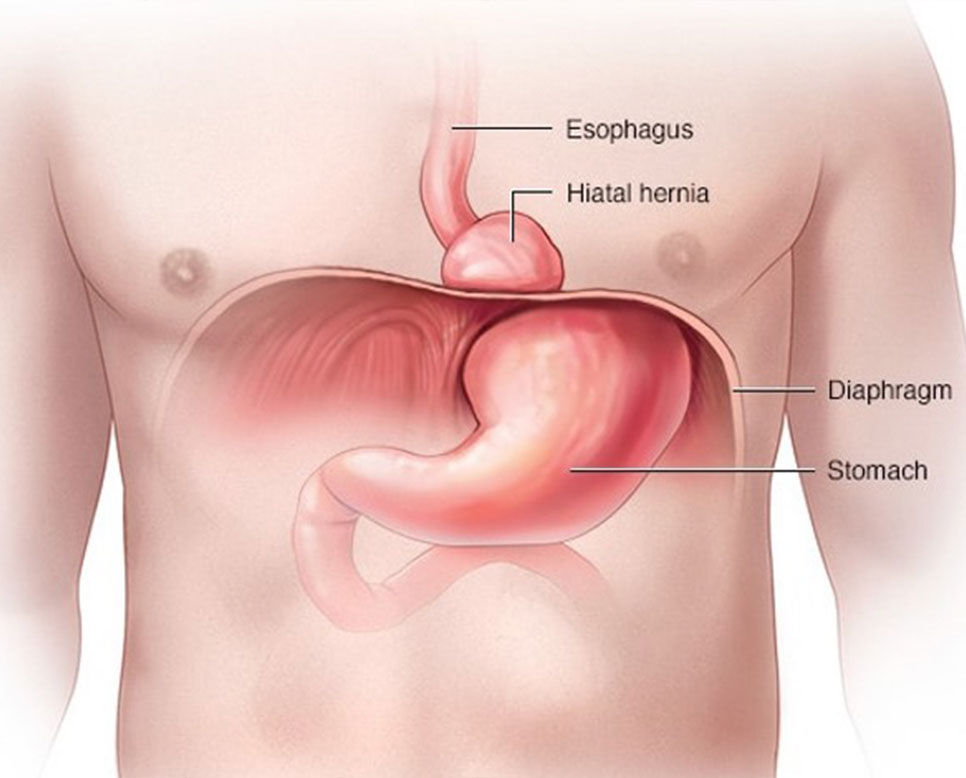Hernia
What is a Hernia?
A bulging of an organ or tissue through an opening. Typically, a hernia involves the stomach or intestine.
Hiatal Hernia
This hernia occurs through the diaphragm. The stomach or other organs push into the chest cavity. These can be straightforward or quite complex. These hernias can result in reflux (link) and lead to heartburn. These can compress the lung and lead to shortness of breath. These hernias are most commonly repaired either laparoscopically or robotically with mesh. If the defect is too large or chronic, this may require a thoracic consultation or an open operation.

Umbilical / Ventral Hernia
These occur through the umbilicus or belly button, or in close proximity to the belly button. These hernias can enlarge over time, become quite painful or even debilitating. These can become disfiguring and result in a large protrusion.
These hernias are most commonly repaired laparoscopically with mesh. If the defect is too large or chronic, this may require an open operation. If this is required, the incision and recovery may be more extensive. This will be discussed during your office visit prior to surgery.
Inguinal Hernia
This is the most common hernia. The small bowel and / or abdominal cavity lining, called the peritoneum, can protrude through the inguinal canal. These hernias can enlarge over time, become quite painful or even debilitating. Bowel and bladder changes can result from inguinal hernias.
Male hernias are usually repaired electively; whereas, women with inguinal hernias should have these repaired urgently. Meaning, we will make arrangements to repair this in a week if possible.
These hernias are repaired laparoscopically with mesh. If the defect is too large or chronic and requires an open operation, Dr Carlton may refer this to another surgeon as the recovery and hospital stay will likely be more involved.
Incisional Hernia
This usually refers to a failed previous surgery. This can occur through either previous open or laparoscopic incisions. Also, this can occur at any site on the abdominal wall. These hernias are most commonly repaired laparoscopically with mesh. If the defect is too large or chronic, this may require an open operation.

